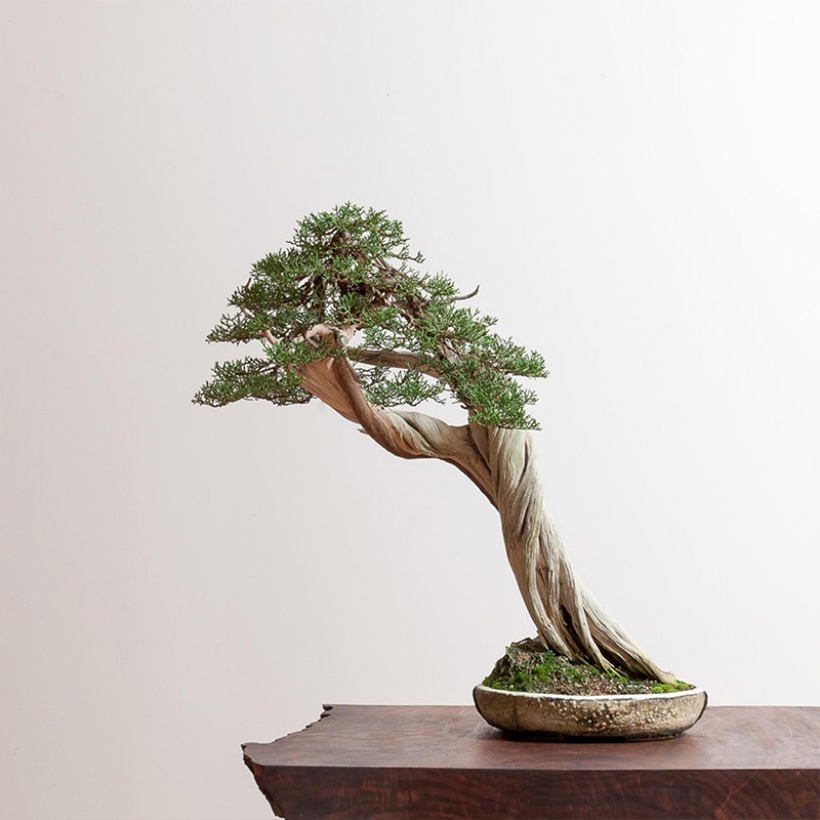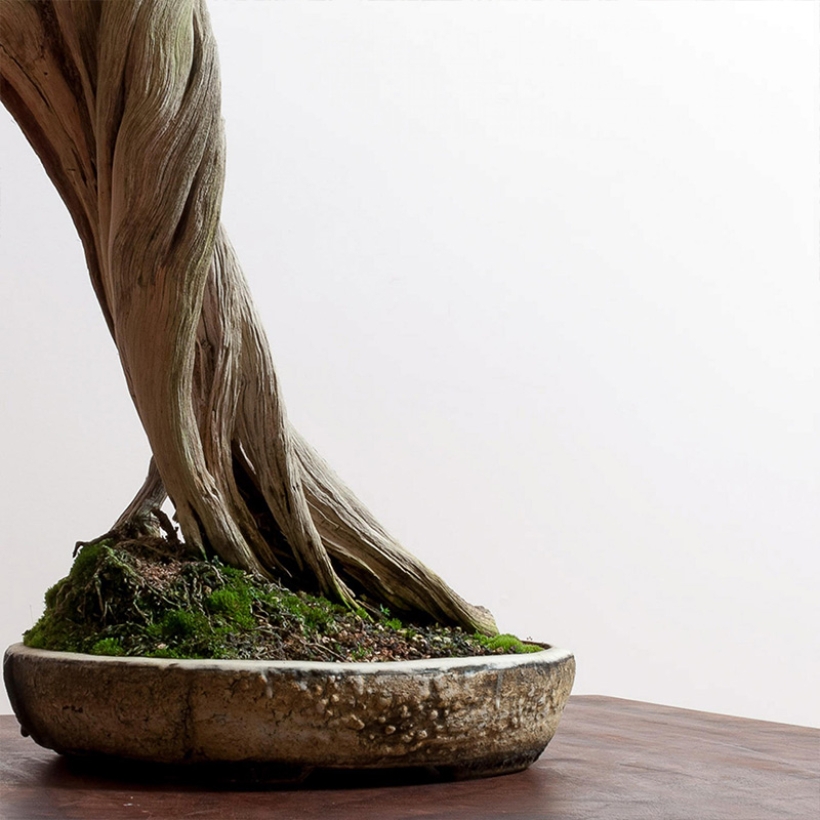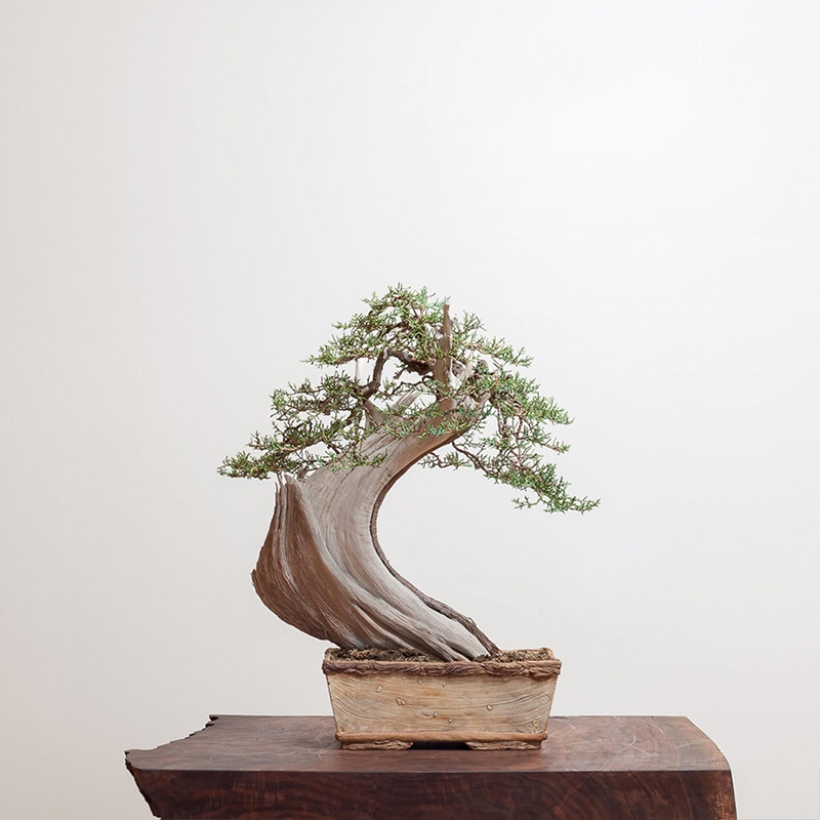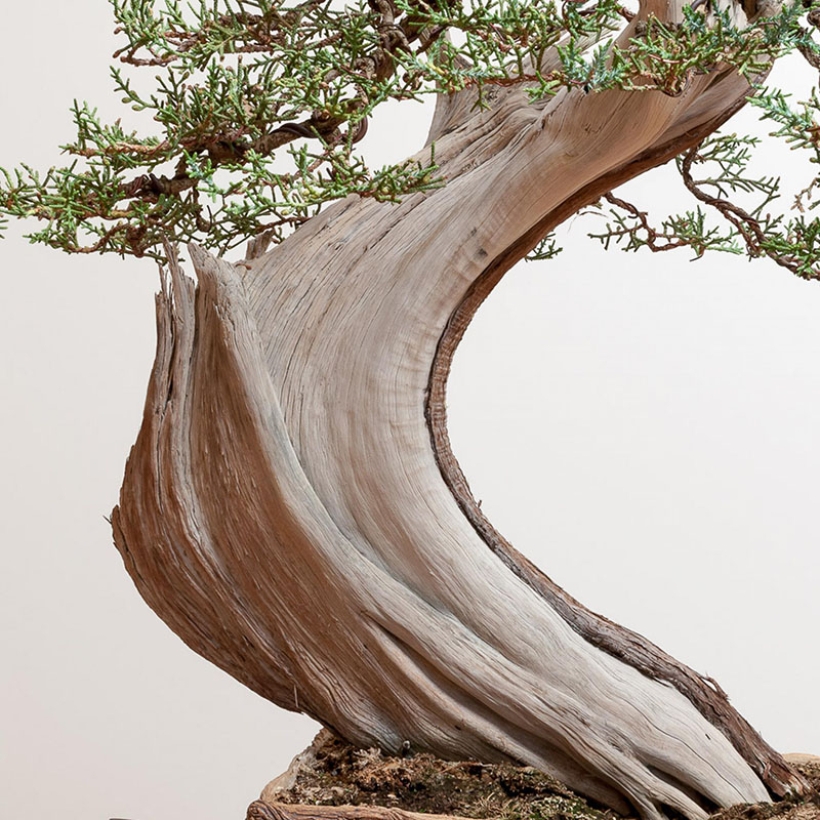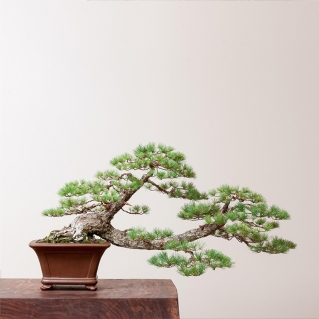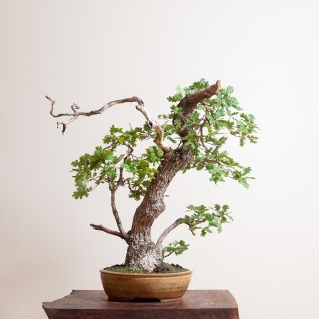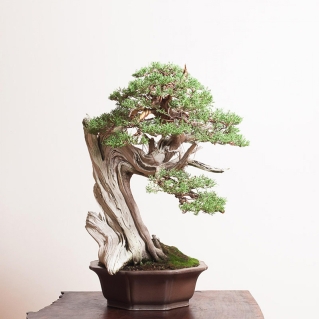California Juniper Bonsai
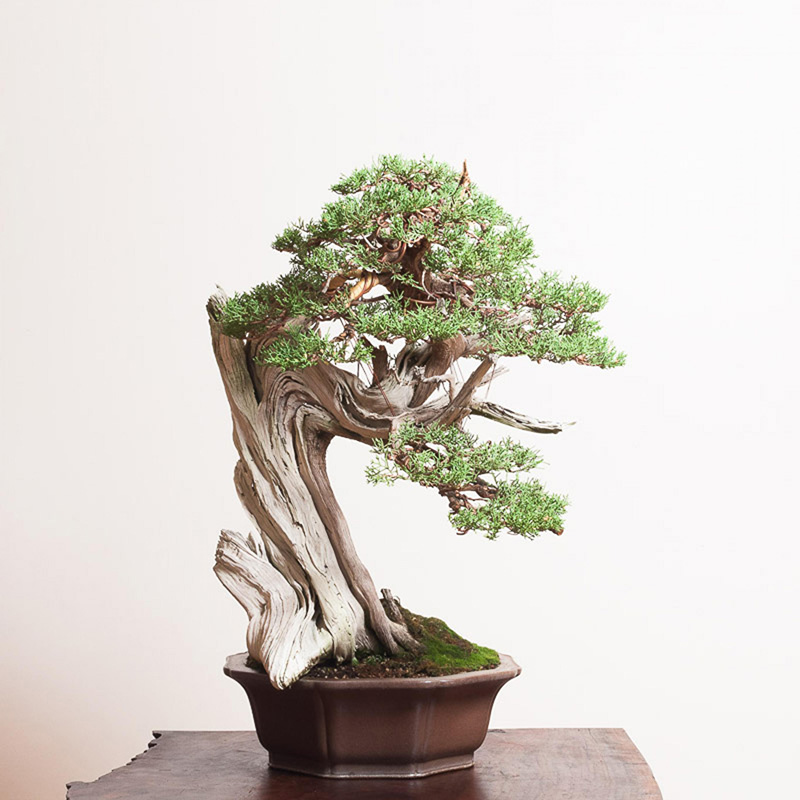
General Information
California juniper bonsai—Juniperus Californica—is an iconic bonsai species in North America because it was the first real yamadori that was collected. John Naka used the California juniper to showcase the growing potential of the Southern California landscape. It is a true international representation of bonsai that grows outside of Japan.
The California juniper is characterized by its powerful, thick, chunky deadwood. With dramatic live veins resulting from desiccation of the Mojave Desert and a beautiful emerald green foliar mass, the California juniper bonsai is an incredible tree to behold and a favorite among bonsai enthusiasts.
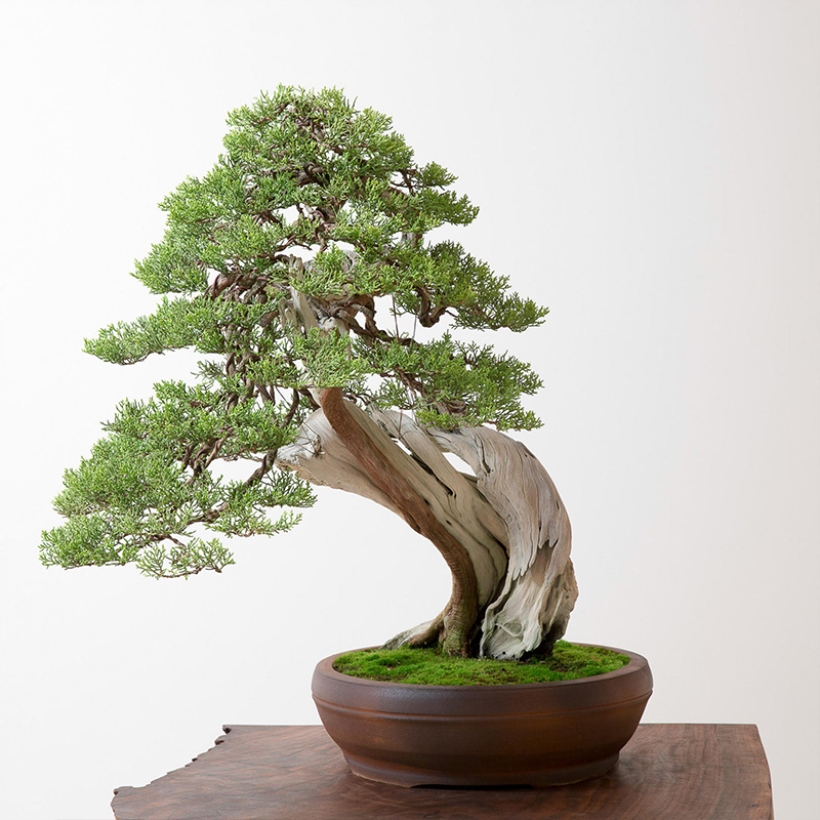
Caring for California Juniper Bonsai
Watering
Even though California juniper is grown in the dry, arid conditions of the Mojave Desert, it must be watered moderately once placed in a bonsai container.
This means you don’t want to let your California juniper get bone dry through the entirety of the container. Once the first inch of soil is dry, you’ll want to rehydrate the tree.
Maintaining the correct balance of water to oxygen will really help to cultivate a fine root system.
Sun Exposure
California junipers love full sun. This exposure to the sun allows California junipers to maximize their capacity to produce tight, dense, compact growth and gives them the strength they need to thrive.
In dry, arid desert conditions, add a shade cloth during the hottest summer months, but allow full sun exposure during the rest of the year.
Temperature
California juniper bonsai can tolerate temperatures well over 100°F, assuming it’s being watered moderately, allowing the tree to cool itself.
If you start to see discoloration in your California juniper, you’ll want to put it under a 30% shade cloth.
California juniper bonsai should never be allowed to freeze. Even though the tree can tolerate freezing temperatures in the Mojave Desert, the seasonal roots in a bonsai container can be easily damaged in freezing temperatures.
Fertilizing
Like most junipers, the California juniper will produce a lot of foliar growth and will elongate and thicken quickly when fertilized aggressively during development.
With moderate fertilization, the California juniper bonsai tree will produce a fair amount of growth.
California junipers in the refinement stage will produce a more manageable quality of growth with the light application of fertilizer.
Pruning
The best time to structurally style or remove branches from a California juniper bonsai is in the early spring, prior to the onset of growth, or the early fall.
For refinement, California juniper should be pruned right after its first flush hardens, sometime around late May to early June. This allows for a much more manageable and controllable push of growth.
Letting the spring flush growth exist on your California juniper past this point will encourage more aggressive growth.
Wiring
California juniper is a collected tree with an unbendable trunk. Some deadwood styling can be done with power tools, and branches can be trained with wire.
Similar to the Japanese technique, you can split the live vein away from the deadwood, but the wood is brittle, so it must be handled carefully.
Repotting
California juniper bonsai can take a long time to form a strong root mass, so it’s important to never bare root or heavily prune the roots upon repotting.
Ideally, you’ll want to gingerly remove the compact surface, sides, and bottom mat of roots to avoid damaging the fine roots.
Repotting California juniper is best when temperatures are just starting to warm up in the spring, as they require heat after the repotting process to help promote foliar growth.
When repotting, use 1-1-1 akadama, pumice, and lava—or 2-1-1 in hot, dry, low humidity areas—with a soil particle size of about ⅛ to ¼ of an inch.
Propagation
The California juniper bonsai tree is self layering. The air layering and ground layering are wonderful mechanisms for propagating the tree.
The most efficient methodology for propagating California juniper is through cuttings, though you can germinate seeds as well.
Pests/Disease
In low humidity areas, California juniper is susceptible to spider mites. This critter will be their greatest nemesis in dry, arid regions where the tree is cultivated as a bonsai.
In the moister regions, California juniper bonsai can be susceptible to wood boring beetles.
California juniper can be affected by juniper tip blight (Phomopsis), but is not typically heavily plagued with the disease because they are most commonly cultivated in drier regions of the world.
California Juniper Bonsai FAQS
The answer is an emphatic no.
You should never pinch California juniper bonsai. You must allow the foliar mass to grow and harden and regain energy before you prune.
You may want to remove crotch growth from the structural shoulders of the branching in spring. This can be done using your fingers, but you should never pinch the tips of the growth.
Termites typically only affect young California junipers that don’t have a lot of tannin content in the heartwood of the deadwood.
The only way to remove termites is to locate them, identify their holes, and apply an insecticide to their tunnels.
Fumigation of the entire tree is untested and unproven, and could be detrimental to the foliar mass and survivability of the tree.
Absolutely not.
Once the California juniper is moved to a bonsai container, it cannot tolerate freezing temperatures.
Styling your California juniper should be done in the spring, prior to the push of growth, or in the latter portion of the summer into early fall.
You definitely shouldn’t style any juniper species in the spring, when they’re producing new foliar mass. This is when the live vein is most easily damaged, causing a significant amount of dieback and possibly even death to the tree.
